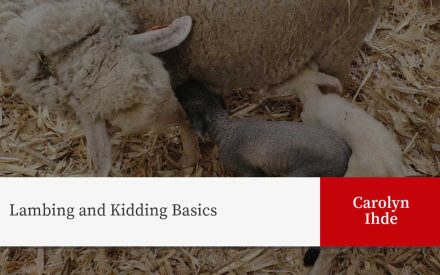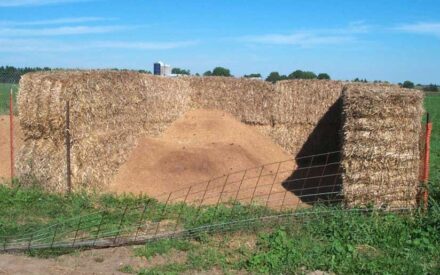It may be common knowledge Wisconsin leads the United States in cheese production, but did you know that Wisconsin is the leader in sheep milk and cheese production? Sheep cheese is not a new culinary concoction, rather a 4000-year-old tradition staking a claim amongst Wisconsin’s dairy producers, cheesemakers, and cheese lovers.
Wisconsin’s sheep milk is produced on about 15 farms by sheep breeds developed for high milk production and length of lactation. Dairy genetics from breeds such as East Friesian and Lacaune were implemented into flocks in the 1990s to the Rambouillet, Dorset, and Finn sheep traditionally used as the genetic foundation for Wisconsin’s sheep dairies. Recently, producers are introducing Awassi and Assaf genetics for optimum production and disease resistance. A high-producing dairy ewe can produce around four pounds of milk per day on average. However, at the peak of her lactation curve, she can produce anywhere from eight to twelve pounds per day, equating to 1000 to 1500 pounds per lactation. A typical lactation can be between 180-210 days.
Similar to cow’s milk, sheep’s milk is categorized by milk components. On average, sheep milk has a 5.5 – 7.14% butterfat content, protein between 5.5 – 6.21%, approximately 19.3% solids, and 193 mg of calcium. Sheep has smaller fat globules than goat or cow’s milk with medium fatty chain acids, is high in Vitamin B12 and folate, and is high in A2 protein, possibly making them more easily digested by humans.
Due to the high amount of milk solids and almost double the fat content, a gallon of sheep milk can make more cheese than a gallon of cow’s milk. So why is sheep’s milk cheese not a common sight in the marketplace? It comes down to the volume of milk produced and the number of sheep currently in milk production. However, sheep cheeses are beginning to be noticed by cheese enthusiasts and consumers. Not only are sheep dairies gaining in number and interest, but cheesemakers are also creating new cheeses with sheep milk. Wisconsin is truly leading the way for sheep dairies, cheese processing, and consumption.
Many of the sheep cheeses found in the US grocery stores is imported. Cheeses such as Manchego from Spain, Roquefort from France, and Pecorino from Italy. Even the more common Feta and Ricotta initially were created from sheep’s milk. Today’s American cheesemakers are becoming increasingly creative with sheep milk, and again, the hub seems to be in Wisconsin. Many local creameries are creating their varieties of sheep cheese for sale in Wisconsin cheese shops and groceries. Not only are the artisan cheesemakers being creative with flavors and textures incorporated into the cheese from the sheep milk and the cultures used to create them, but fun and witty names are showing up on the labels!
Research the Sheep Dairy Industry in Wisconsin, stop into a local creamery, or make a day trip to visit a cheese shop and ask about Wisconsin sheep cheese. “Ewe” may be surprised at the varieties, flavors, names, versatility, and growing popularity of this nutritionally rich dairy product. Even better, you may just find your next favorite food and be at the forefront of an emerging Wisconsin classic.
References:
Schoenian, S. (2021). Sheep 101: Dairy sheep. Retrieved from: Sheep 101: Dairy sheep

 Lambing and Kidding Basics
Lambing and Kidding Basics Wisconsin Sheep Shearers List: 2024
Wisconsin Sheep Shearers List: 2024 Preliminary forage recommendations for grazing solar sites
Preliminary forage recommendations for grazing solar sites Composting Mortalities
Composting Mortalities


